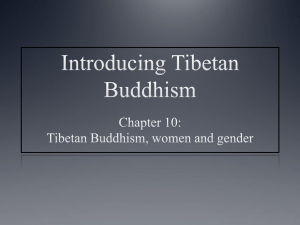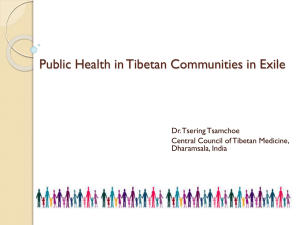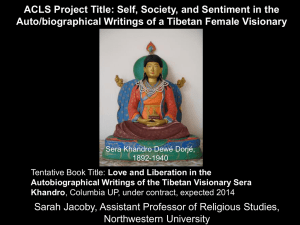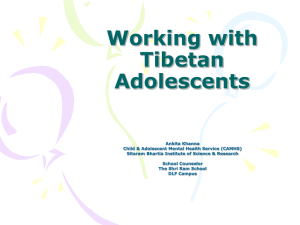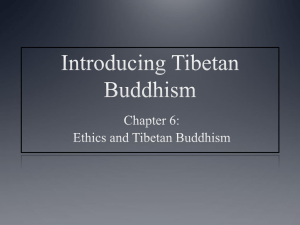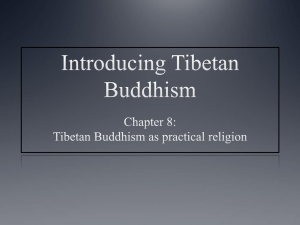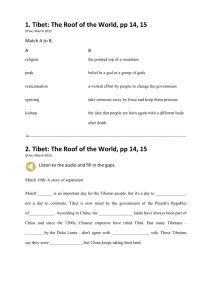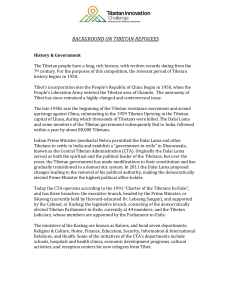Background Information on Tibetan Refugees
advertisement
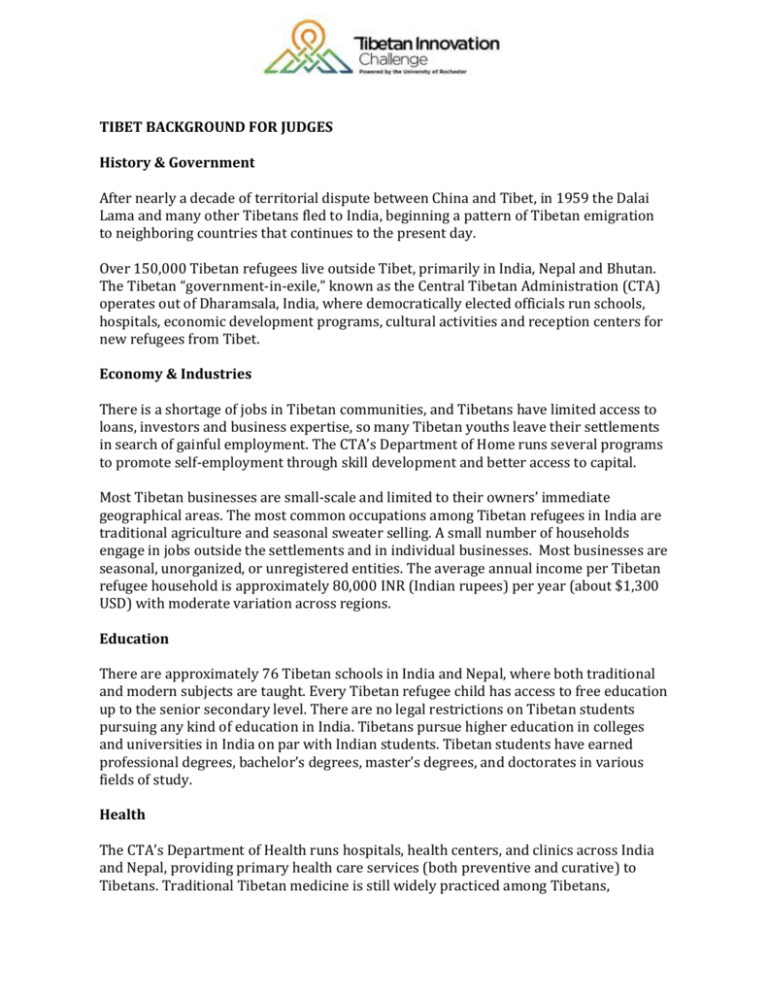
TIBET BACKGROUND FOR JUDGES History & Government After nearly a decade of territorial dispute between China and Tibet, in 1959 the Dalai Lama and many other Tibetans fled to India, beginning a pattern of Tibetan emigration to neighboring countries that continues to the present day. Over 150,000 Tibetan refugees live outside Tibet, primarily in India, Nepal and Bhutan. The Tibetan “government-in-exile,” known as the Central Tibetan Administration (CTA) operates out of Dharamsala, India, where democratically elected officials run schools, hospitals, economic development programs, cultural activities and reception centers for new refugees from Tibet. Economy & Industries There is a shortage of jobs in Tibetan communities, and Tibetans have limited access to loans, investors and business expertise, so many Tibetan youths leave their settlements in search of gainful employment. The CTA’s Department of Home runs several programs to promote self-employment through skill development and better access to capital. Most Tibetan businesses are small-scale and limited to their owners’ immediate geographical areas. The most common occupations among Tibetan refugees in India are traditional agriculture and seasonal sweater selling. A small number of households engage in jobs outside the settlements and in individual businesses. Most businesses are seasonal, unorganized, or unregistered entities. The average annual income per Tibetan refugee household is approximately 80,000 INR (Indian rupees) per year (about $1,300 USD) with moderate variation across regions. Education There are approximately 76 Tibetan schools in India and Nepal, where both traditional and modern subjects are taught. Every Tibetan refugee child has access to free education up to the senior secondary level. There are no legal restrictions on Tibetan students pursuing any kind of education in India. Tibetans pursue higher education in colleges and universities in India on par with Indian students. Tibetan students have earned professional degrees, bachelor’s degrees, master’s degrees, and doctorates in various fields of study. Health The CTA’s Department of Health runs hospitals, health centers, and clinics across India and Nepal, providing primary health care services (both preventive and curative) to Tibetans. Traditional Tibetan medicine is still widely practiced among Tibetans, incorporating centuries-old traditions based on Buddhist principles alongside more modern Western methods and treatments. Notable public health issues among Tibetan refugees include tuberculosis and Hepatitis B, both of which are prevalent at high rates in refugee communities, and chronic conditions such as diabetes, hypertension, cancer, and heart disease, which have increased in recent years. Infrastructure & Transportation Infrastructure quality and access to transportation vary depending on region. The most common complaints are poor road conditions within settlements, poor maintenance of housing, lack of a proper waste management system, and poor lighting in public spaces. Basic requirements in schools are satisfactory, but there is opportunity to improve technology-based teaching and learning aids. Tibetan refugees in India are affected by some of India’s persistent infrastructural challenges and shortcomings, including limited or unreliable electricity services, water supplies, sanitation, and internet access. Legal Considerations In October 2014, not long after granting Tibetan refugees the right to vote in Indian elections, the government of India approved the Tibetan Rehabilitation Policy, which set a uniform policy across all Indian states regarding the rights of Tibetan refugees. In part, it specifies that Tibetans are allowed to undertake any economic activity, including starting enterprises, and are entitled to all associated permits and licenses. The policy states that Tibetans can pursue and take any jobs for which they are professionally qualified. Tibetan refugees in India are unable to own land; however, federal and state governments in India have leased out thousands of acres of land for refugees to live in self-sufficient compact communities, where they may legally own and operate their own businesses. Effectively there are no legal barriers to Tibetan refugees starting businesses in India. Social Atmosphere Relations are good between Tibetans and Indians, although the two groups generally maintain their separate identities. Most Tibetans do not seek Indian citizenship or intermarry with Indians. There are some generational differences among the social attitudes of Tibetans. Many younger Tibetans were either born outside of Tibet, or left Tibet when they were very young, and thus have grown up under the influence of outside cultures. Many Tibetan youth speak English, use the internet, enjoy western entertainment, and leave their communities in search of employment. The older generation of Tibetans worries that their traditional culture is being diluted. Political Atmosphere The relationship between the CTA and the government of India is excellent. Successive Indian governments have permitted the Dalai Lama to live in India since 1959, and the Indian government has allowed the CTA to operate schools, health clinics, and other community amenities. Federal and state governments in India have leased out thousands of acres of land for refugees to live in self-sufficient compact communities, as well as for the establishment of Buddhist monasteries. Tibetan Culture The geographical isolation imposed by the Himalayas allowed Tibetans, over a long period of time, to develop a unique culture separate from those of other peoples in central Asia. Tibetans have their own distinct language, art, music, dances, literature, architecture, cuisine, calendar, and cultural traditions. Much of Tibetan culture is influenced by Tibetans’ Buddhist beliefs; music, literature and artwork often feature religious themes. Tibetans both in Tibet and in the rest of the world are committed to preserving the traditional elements of their culture. Importance of Religion The overwhelming majority of Tibetans practice Tibetan Buddhism. The government of India has allowed Tibetan refugees to establish Buddhist monasteries to educate monks in Buddhism and Tibetan culture. The emigration of Tibetans to other parts of the world in recent decades has helped popularize Tibetan Buddhism throughout the globe. Tenzin Gyatso is the 14th and current Dalai Lama. For several centuries, successive Dalai Lamas served as both the spiritual and political leaders of the Tibetan people. In 2011, the 14th Dalai Lama initiated a process of transferring his political authority to the democratically elected head of the Tibetan Government-in-Exile.

